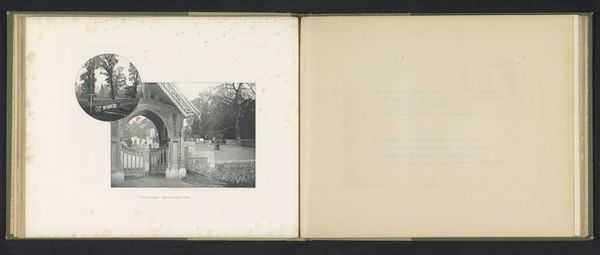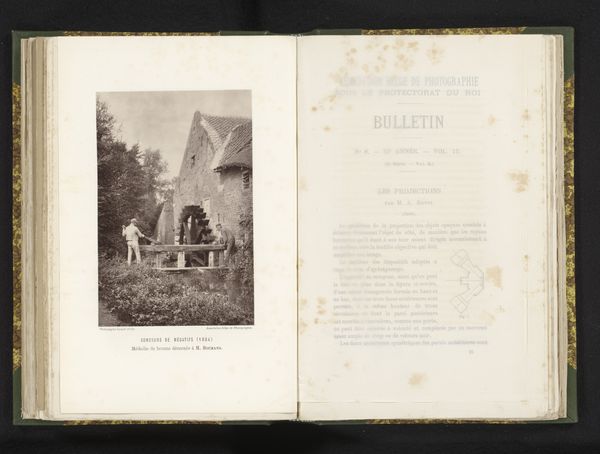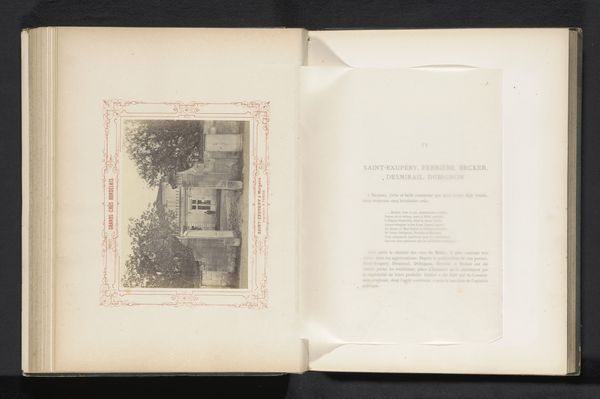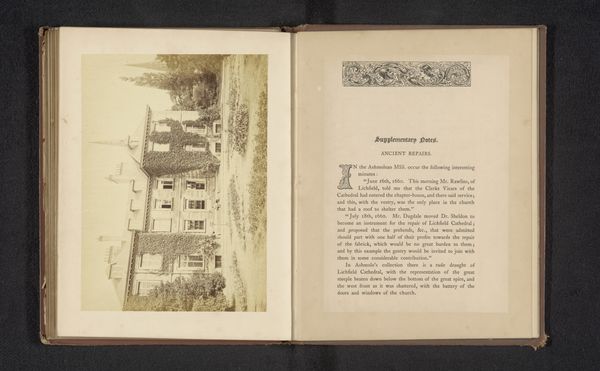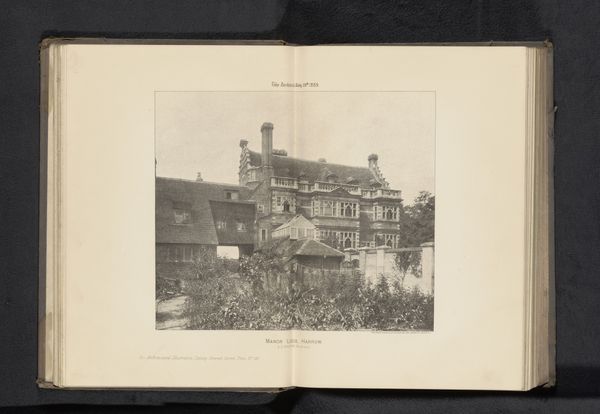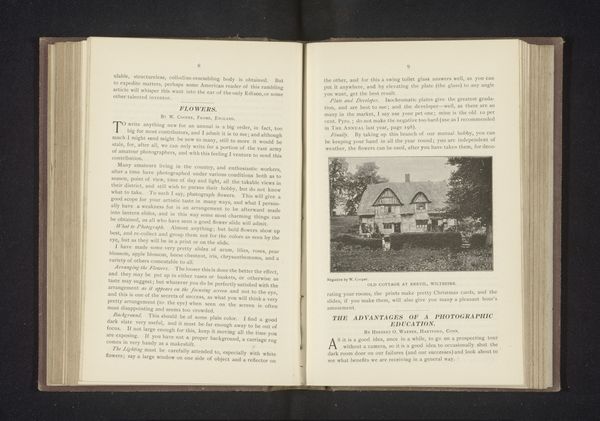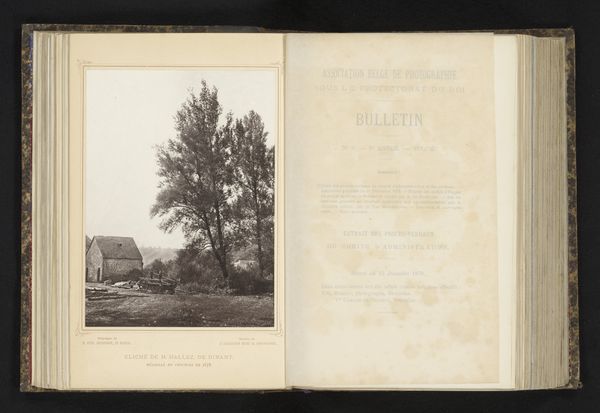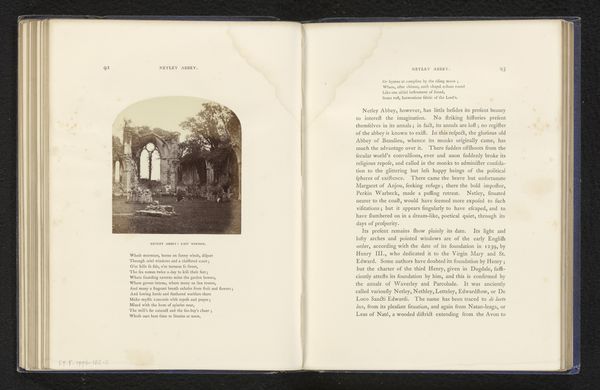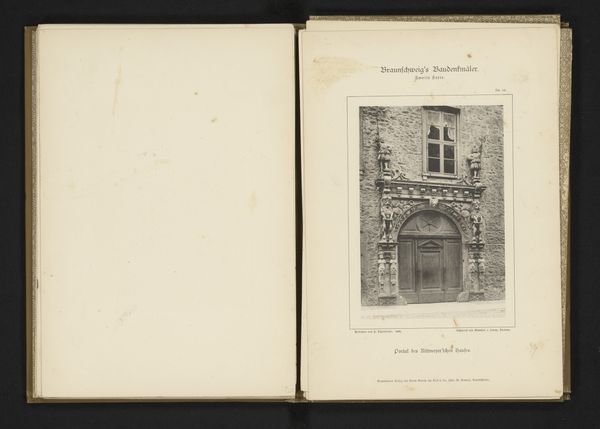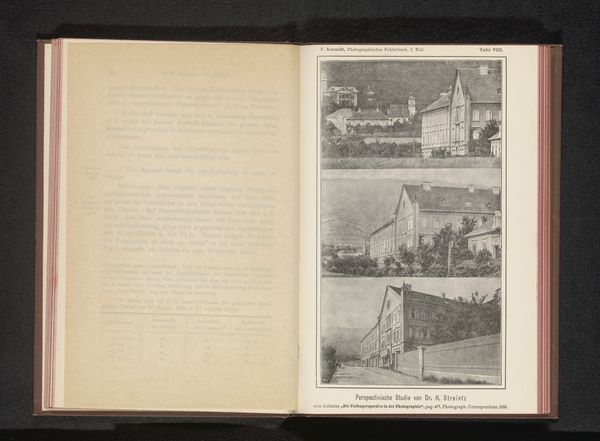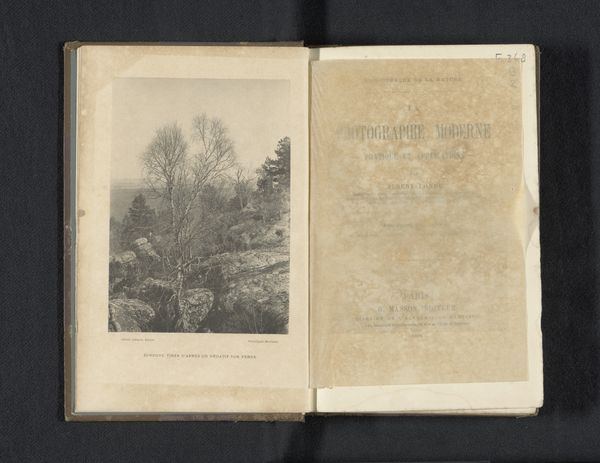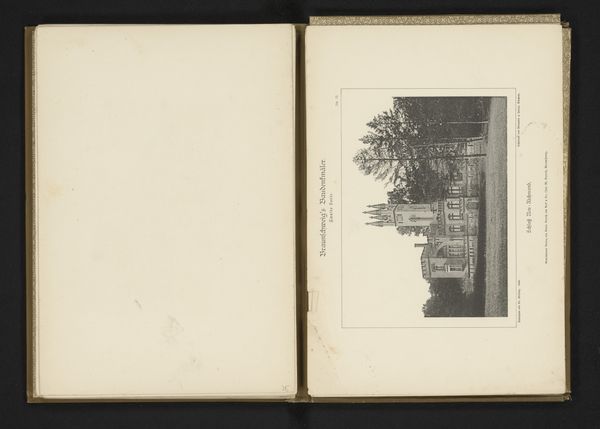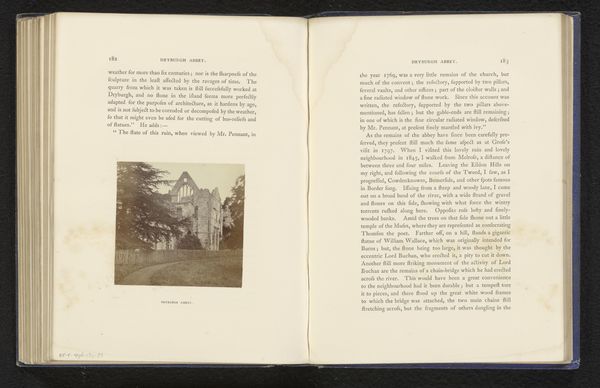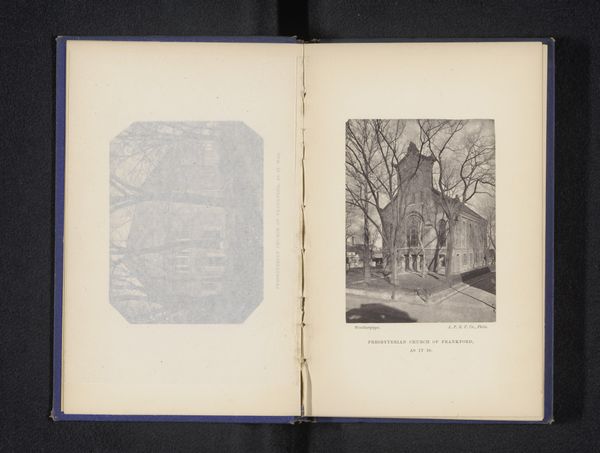
Dimensions: height 166 mm, width 117 mm
Copyright: Rijks Museum: Open Domain
Curator: This is "Watermolen bij Raborive aan de Amblève," a photograph attributed to Leon Laoureux, likely created before 1878. What do you see in this image? Editor: I immediately notice how dreamlike and painterly it feels for a photograph. The tonal range is narrow, the details softened. It feels less like objective documentation and more like a wistful memory of the scene. Curator: Yes, the romantic style is quite evident. Consider the composition itself: The watermill isn't presented as a testament to industrial progress but rather as an integral part of a serene landscape. The wheel, half-veiled by ivy, speaks more to a return to nature than human ingenuity. Editor: And I find the human absence telling, even though the structure obviously hints at it. We are placed as outsiders, almost intruders, looking upon a private, pastoral idyll, untouched and timeless. Curator: The choice of this subject speaks to a broader artistic movement of the time, the revival of interest in pre-industrial life, a yearning for simpler times as a reaction against rapid urbanisation and industrial development. Watermills in particular became symbolic, representing both progress and nature. Editor: It also occurs to me how carefully staged the composition seems; look how the photographer frames the mill against the light and shadow to reveal the essential harmony between organic forms of the forest and architectural construct of a watermill. Curator: I agree. Laoureux here almost imbues this watermill with an aura. A feeling of a safe haven from societal changes, perhaps a commentary on environmental impact by humanity? Editor: The print's sepia tone further enhances this effect. The choice evokes nostalgia while lending this simple scene a gravitas far beyond the subject, turning "Watermolen bij Raborive aan de Amblève" into an invitation to connect to the slower currents of time. Curator: It is amazing how powerful even a seemingly mundane depiction of the physical space turns out to reflect social and political landscape as well as psychological inclinations that transcend a mere material representation. Editor: Indeed, Leon Laoureux captured a slice of life that resonates across generations, speaking of progress, preservation, and our longing for natural continuity.
Comments
No comments
Be the first to comment and join the conversation on the ultimate creative platform.
